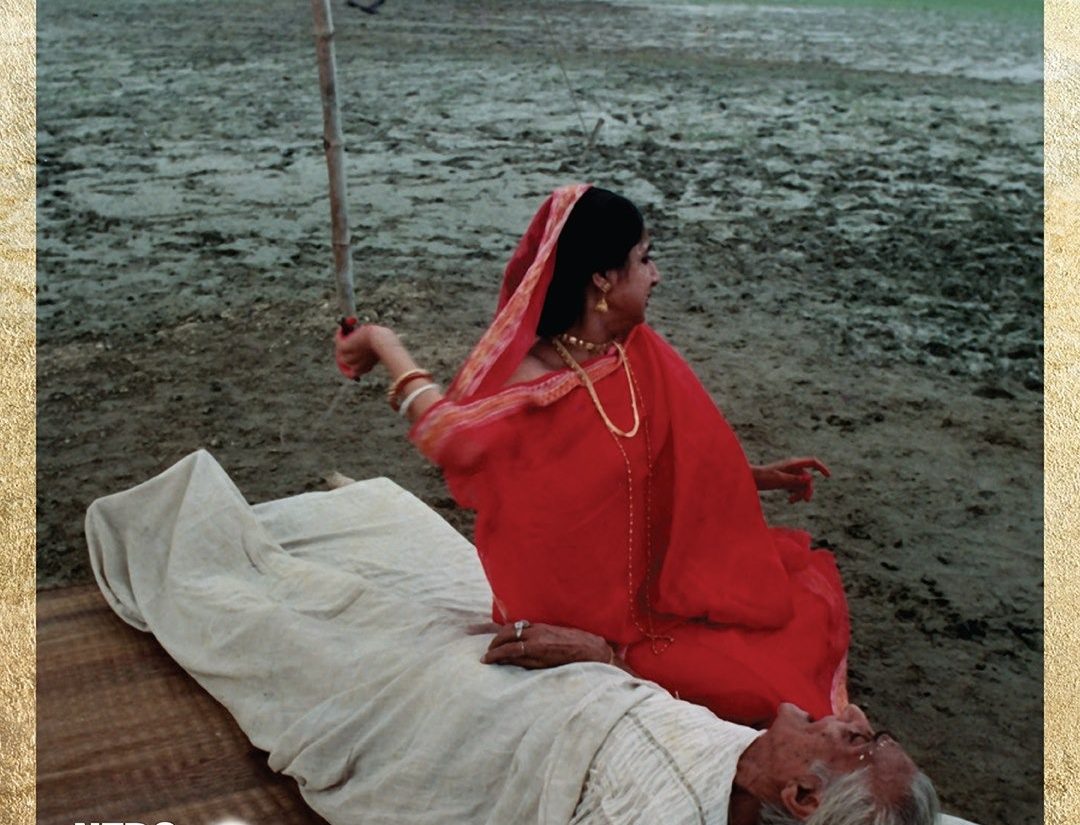
Article Written By EIH Researcher And Writer
Archi Biswas
Antarjali Yatra was a custom prevalent among the Hindu upper castes where the lower body (usually upto the navel) of a dying person was immersed in the holy river. As the person waited to die, close family members and brahmins sung kirtans and read verses from the shastras dedicated to a smooth journey towards heaven.
Even though it started as a simple wish of the dying person, soon children who could no longer take care of their sick and elderly parents left them near the water bodies to die alone. Uncertain weather conditions, change in water levels, lack of nutrition and wild animals made surviving in those circumstances impossible.
Very little written evidence or literature is present for this custom. A notice-worthy scenario is that even though sati was abolished, poor Brahmin girls married to these dying persons were often left to die with them. Only this time they were engulfed by water and not by fire as during Sati.
Antarjali Jatra, based on a story by Kamal Kumar Majumdar, is set in 1832, just after sati was abolished in Bengal, later adapted into a critically acclaimed film titled the same by Gautam Ghose. The plot centres around a sati. When an elderly Kulin Brahmin is carried to the riverfront right before his death and the priest asks him to marry a girl on his deathbed to be directly sent to heaven. He is swiftly married off to a young girl named Yashobati at the burning ghat itself, so that the girl’s father, a destitute Kulin himself, would be free of the ‘guilt’, of failing to marry his daughter off to a Kulin groom without a dowry. He assures the pandits that when her husband dies, his daughter will commit sati.
The wedding is held at the ghat itself. Yashobati is left alone with her dying husband, with just the chandal (the ghat-keeper and corpse cremator – deemed untouchable) to keep her company. When the chandal convinces her to flee, she refuses, even though death awaits her and she fears it. She attends to her dying husband, who begins to recover under her care.
By the end of the 19th century, the custom of Antarjali Yatra slowly began to lose its prevalence. In 1865, an old man in Dhaka was left to die alone on the banks of the river Ganga. The local newspaper ‘Dhaka Prokash’ covered this incident and it shook the common public and the government. The missionaries termed this custom ‘Ghat Murder’. The government started to take strict actions as it did with Sati and Child Marriage. The Lieutenant Governor discussed this issue with Sir Ashley Eden, Satyacharan Ghosal, Babu Prassana Kumar Thakur and Digambar Mitra. This discussion led to a vast debate- with some wanting the custom to be declared illegal straight away and others not wanting government interference into this Hindu custom.
The issue was then directed to the Central Government where Digambar Mitra’s letter was thought of as an ‘exemplary understanding of the situation’. He pointed out that even though the custom was repulsive, the sudden interference of the government would hurt the religious feeling of the Hindu community of Bengal. He suggested that education and enlightenment would help these customs fade away. Thus on 14th November 1866; a note was released that stated that banning Antarjali was not a viable option. However, as a way to prevent it, three laws were established:
1. A written document should be procured from the dying individual stating that he/she has consented to the custom.
2. Before the Yatra, the written document of the dying individual, their details, the ghat’s location and other necessary information should be provided to the government.
3. The dying individual’s health condition or their chances to get any better should also be mentioned by the doctor.
Slowly the custom or practice began to lose its prominence and by the end of the 19th century, it stopped completely.

A still from the film Antarjali Yatra directed by Gautam Ghose.
Recently married Yasobhati taking care of her dying husband Seetaram.
Source: https://www.arthousecinema.in/2014/06/antarjali-jatra-1987/
BIBLIOGRAPHY
“Rammohan Remembered: Sati and Antarjali Jatra.” Get Bengal. Accessed July 30, 2022. https://www.getbengal.com/details/rammohan-remembered-sati-and-antarjali-jatra#:~:text=Antarjali%20Jatra%20based%20on%20a,before%20he%20is%20to%20die .
Anandabazar. “সম্পাদক সমীপেষু: অন্তর্জলির যাত্রাপথ.” Anandabazar. Anandabazar, September 28, 2018. https://www.anandabazar.com/editorial/letters-to-the-editor/letter-and-facts-about-the-ritual-of-antarjali-yatra-1.872474 .
“Watch Antarjali Yatra | Prime Video – Amazon.com.” Accessed July 30, 2022. https://www.amazon.com/Antarjali-Yatra-Shatrughan-Sinha/dp/B07JMRPLPX .

















